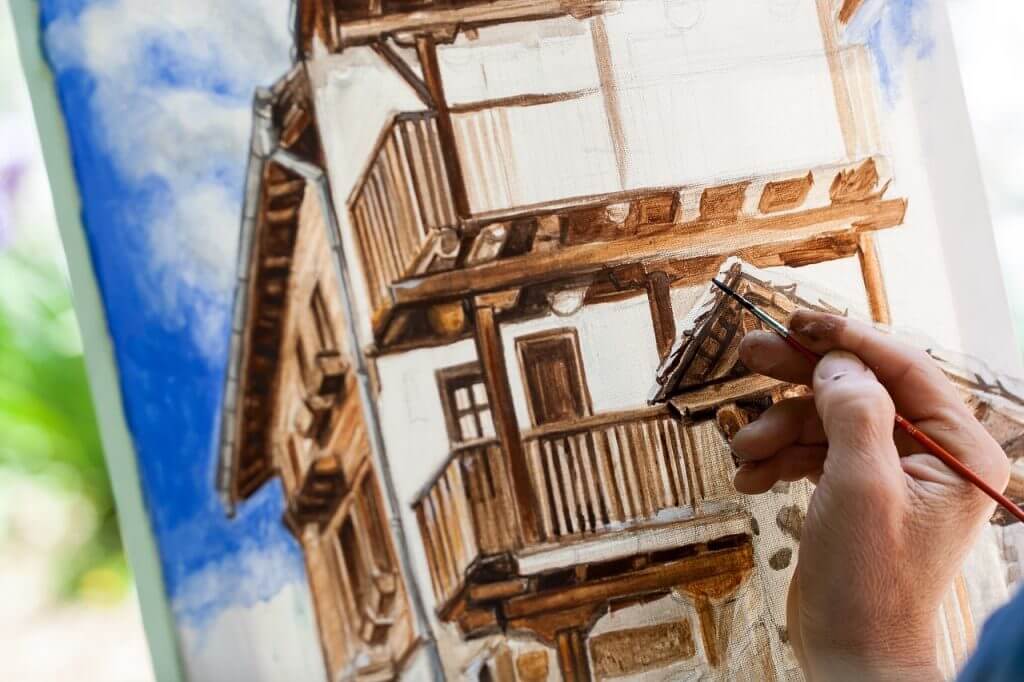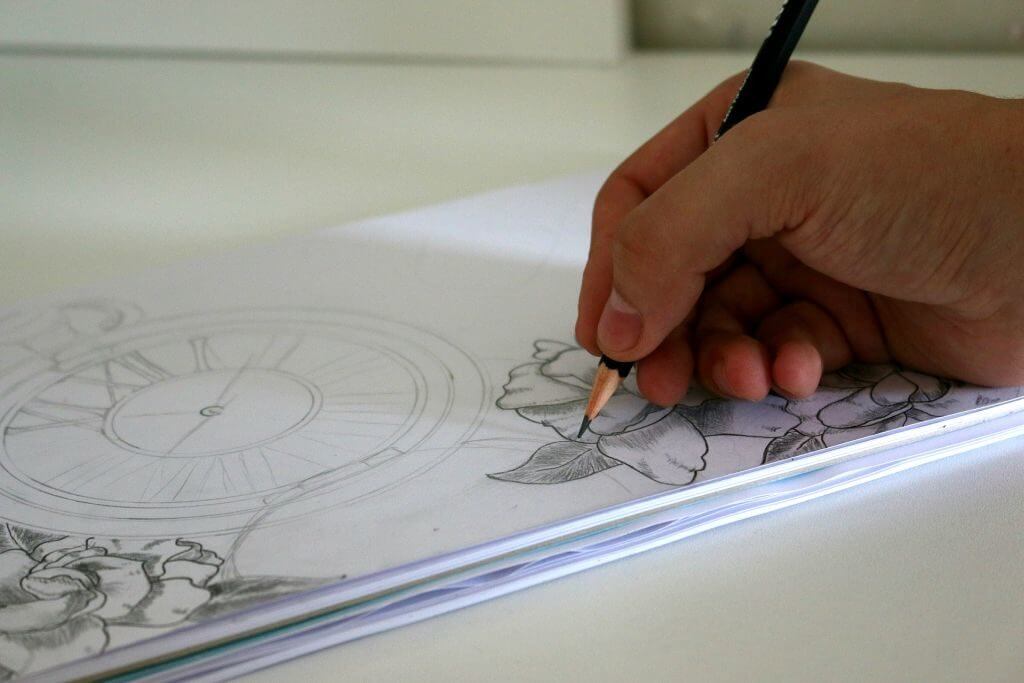Have you ever binge-watched art tutorial videos? I have. I spent a huge part of three weeks watching video tutorials online because a bum wrist kept me from doing art of my own.
But you know what? That time turned out to be well-spent on a number of levels. To begin with, I learned about mediums I’d never heard of before (Resin painting? Really?) and was inspired to try a ton of other mediums as well.
And that’s not all! Here are six of the most important things I learned from watching hours and hours of art videos:
Value vs. color
In most mediums the big attraction is luscious color, but is that really the most important thing?
No matter what medium I watched, the most important element wasn’t color. It was contrast. That’s especially true in black-and-white mediums such as graphite, charcoal, and ink, but it’s no less important in oil painting, acrylics, watercolor or some of the more exotic mediums like egg tempera, gouache, and marker.
Contrast is what gives a two-dimensional shape the appearance of taking up space; of being three-dimensional. And contrast is what enables you to capture light. After all, if you have no dark values, how can you effectively show light values?
Get the colors 100% accurate but miss on the values and your work still looks flat and lifeless. . . but get the darks as dark as they need to be and the lights as light as they need to be, and your work springs to life with or without color.
Deliberate mark-making
I saw some incredibly detailed artwork and some sketchy, looser styles in almost every medium. But from watching all those artists in all those mediums I discovered one very important fact:
The best artists were very deliberate in how they made their marks. And it didn’t matter whether they used brushes, pencils, pens, or pastels.
It’s especially obvious in real-time videos. A lot of artists make one mark, then consider what they’ve done and what they need to do next. They spend more time looking at their painting, their model or reference photo, and deliberating the next step than they spend taking that next step.
That’s not really the way I work, and I stopped several times to take note of how they were choosing their next mark, and think of ways I could be that deliberate too.
Experimentation
No matter what your medium, the best way to learn what works and what doesn’t work is to try it. So go ahead. Experiment!
You don’t have to experiment on serious pieces. But do experiment with quick sketches or studies or on test swatches of paper. The only way to find out if a method, tool, or supply is going to work for you is to try it.
Of course that means you have to be prepared to turn out some bad art and to fail, but that’s okay. In fact, that’s good! You’re more likely to learn from those failed attempts than from the successful ones.
In fact, the shortest route to the right answer is very often identifying the wrong ones.
Patience
For many of the artists I watched, creating was a process, not a goal.
Yes, they were very interested in the end results of their work, the finished pieces, but they were more interested in the process. Just the act of placing marks on paper or canvas gave them as much pleasure as completing a successful piece. So they were willing to take the time needed to do the best work they could do.
Does that describe you? From what I saw, it seems to be the key ingredient to working long enough and hard enough to create a consistent high-quality body of work.
Excitement
You can call it passion, obsession, or being compelled to create, but every single artist I watched and listened to expressed excitement for their medium and work. No matter what they painted or drew or what their style, they were compelled to create by the sheer joy of the process.
Even if they didn’t actually say the words, “this is exciting,” you could hear it in their voices and see it in the ways they handled their mediums.
Excitement is what helps us maintain patience and persistence even when a piece goes off course. It also gives us mental creativity to solve problems or tackle a difficult subject. Find your excitement as you create, and you’ll develop an inner well of creativity that makes anything possible.
Sense of adventure
Similar too but not quite the same as excitement was a sense of adventure. Whether artists were capturing a formal garden in loose, broad strokes or drawing a larger than life rose in extreme detail, they all viewed their work an adventure.
Each art piece was part of the adventure, but art in and of itself was the larger adventure. It propelled them forward through each piece, and then on to the next piece—even if they had to leave the studio, or their state, or in some cases, travel to other countries to find what they were looking for.
I promise you, your adventure is out there, if you just give yourself the freedom to look for it. And it’ll change the way you look at art forever.
Want to see some of the best drawing and painting videos I found?
Check out my lists of 50+ Free Painting Videos on YouTube and 50+ Free Drawing Videos on YouTube and get inspired!
This post may contain affiliate links.


